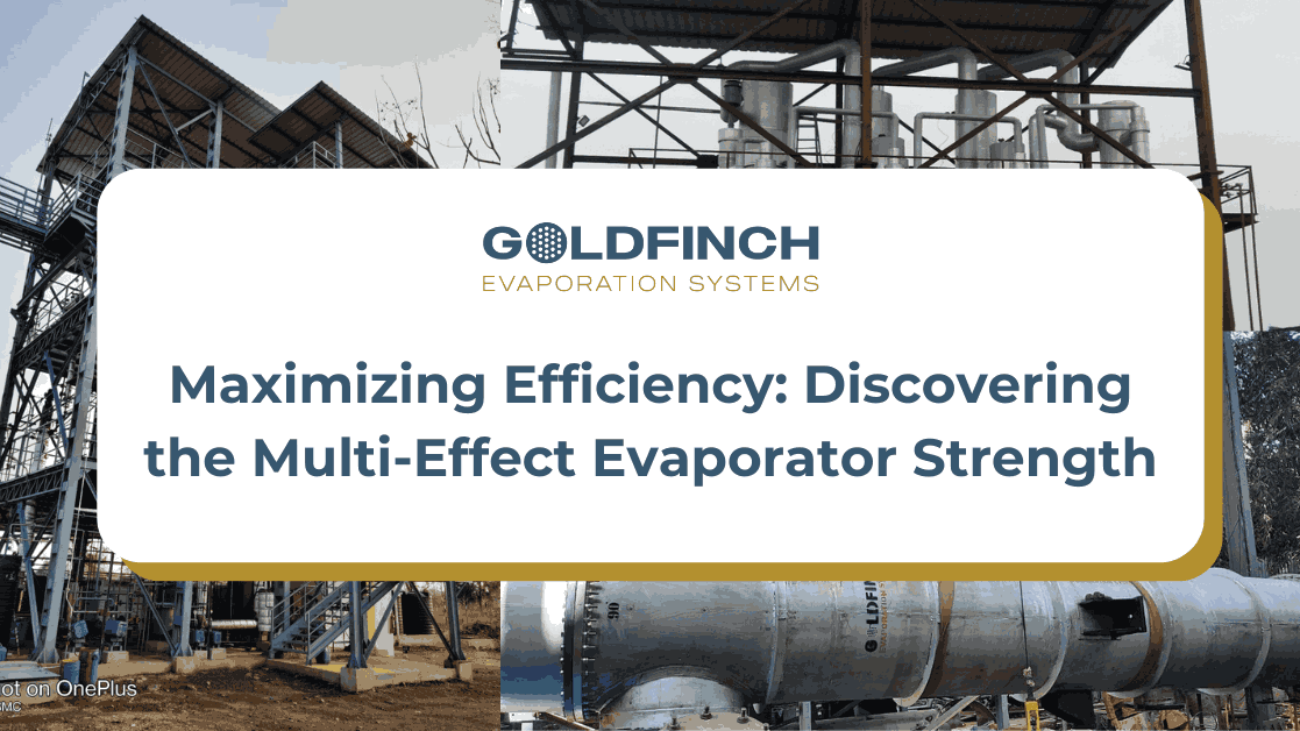Multi-effect evaporator
In these intensely competitive industrial times, production efficiency coupled with minimal environmental impact is the prime concern among all industries. Multi-effect evaporator (MEEs) have emerged as a fascinating solution offering numerous advantages for industries that are keen on cost efficiency and environmental conservation in their processes. This blog goes deep into MEE working, advantages, applications, and others in the hope of guiding industries toward making well-informed choices.
How Multi-Effect Evaporator Work
A multi-effect evaporator operates using the principle of heat reuse. It comprises multiple stages or “effects,” each using the vapor generated from the previous stage as a heat source. This design significantly reduces energy consumption compared to single-effect evaporators. By capturing and repurposing latent heat, MEEs optimize the evaporation process, making them an energy-efficient solution.
The process begins with the introduction of feed liquid into the first effect, where it is heated and partially evaporated. The vapor generated is then transferred to the next effect, where it serves as the heating medium. This chain reaction continues across all effects, maximizing energy utilization and minimizing waste.
Advantages of Using Multi-Effect Evaporators
1. Energy Efficiency
One of the standout features of MEEs is their ability to conserve energy. By reusing heat across multiple stages, they drastically reduce fuel consumption and operational costs.
2. Cost-Effective Operations
Lower energy requirements translate to significant cost savings. Additionally, MEEs often recover valuable by-products, enhancing their overall economic viability.
3. Among the benefits to ecology,
Their contributions include reduced greenhouse emissions and reduced wastewater released into the environment.
4. High Performance and Scalability
MEEs can handle large volumes of feed material, making them suitable for various industrial applications. The modular design of MEEs also fosters easy scalability.
The application of MEEs ranges across many different fields, including:
Multi-effect evaporators in industrial processes
- Chemical Industry: Concentration of chemical solutions.
- Food and beverages: include concentrated juices and condensed milk.
- Pharmaceutical: sorting through the muck and extracting active ingredients.
- Textiles: Effluent treatment and water recovery.
- Paper and Pulp: Recovery of black liquor.
Factors Influencing the Selection of a Multi-Effect Evaporator
Selecting the right MEE involves evaluating several factors:
- The assessment of capacity requirements involves the survey of feed materials in terms of quantity for the process.
- Energy efficiency analyzes the potential for energy savings.
- Material compatibility ensures that the materials used are corrosion-proof.
- Maintenance needs include an understanding of maintenance requirements over the lifetime.
- Maintenance and Troubleshooting of Multi-Effect Evaporators.
Maintenance and Troubleshooting of Multi-Effect Evaporators
Regular Maintenance Tips
- Cleaning: Periodic cleaning to prevent scaling and fouling.
- Inspection: Routine checks for leaks and wear.
- Calibration: Make sure that temperature and pressure measurements are exact.
Common Troubleshooting Issues
- Reduced Efficiency: Often linked to scaling or fouling.
- Vapor Leakage: Check the seals and gaskets.
- Temperature Fluctuations: Review for obstruction in heat exchangers.
Case Studies: Successful Implementation of Multi-Effect Evaporators
Case Study 1: Food Processing Industry
A leading juice manufacturer implemented MEEs to concentrate fruit extracts, resulting in a 30% reduction in energy costs and improved product quality.
Case Study 2: Chemical Industry
A chemical plant integrated MEEs for effluent treatment, achieving zero liquid discharge and substantial cost savings.
Future Trends and Advancements in Multi-Effect Evaporators
The future of MEEs looks promising with advancements in automation and smart monitoring systems. Integration with IoT technology allows real-time performance tracking and predictive maintenance.
Cost-Effectiveness Analysis of Multi-Effect Evaporators
Despite the relatively higher procurement cost of MEEs, the key point in favor of their cost-effectiveness is the energy and operating cost savings achieved over their lifetime. Further adding economic attractiveness is the possibility of recovering valuable by-products.
Conclusions: Multi-Effect Evaporators-Potential for Industrial Operations: An Overview
Industrial processes that are energy-efficient, cost-effective, and environmentally attuned need multi-effect evaporators. Based on the characteristics mentioned above, companies will strive to enhance their opportunities to apply multi-effect evaporators. Because industries have been shifting towards a greener alternative, MEEs can be defined as paradigm-changing technology combining both economic and environmental benefits.


